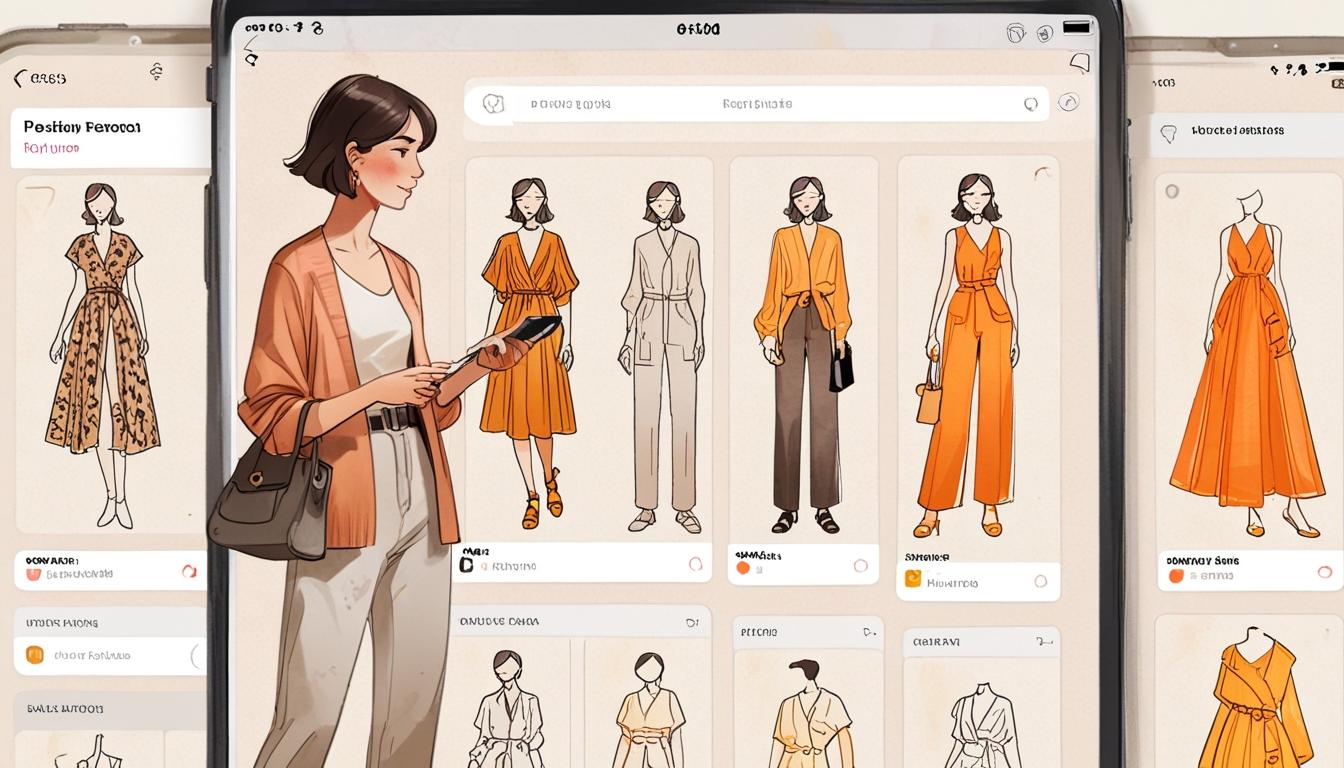Pinterest Unveils AI-Driven Visual Search Tools for a Personalised Shopping Experience
Pinterest has recently launched a suite of innovative AI-powered visual search tools designed to enhance the shopping experience for its users. By focusing on fashion through the lens of vibe, mood, or aesthetic, these tools aim to generate personalised shopping ideas that resonate with users' individual styles.
Historically, Pinterest has prioritised visuals over textual content, establishing itself as a go-to platform for inspiration. With the introduction of AI, users can now engage with visual inspirations in a more descriptive manner, enabling them to not only find inspiration but also purchase items seamlessly. The initial rollout centres on women’s fashion—an area that has always been significant for the platform.
The AI features include highlighting selected pieces of an outfit with a shimmering animated glow. For instance, clicking on a plaid skirt or blue jacket within a pin prompts Pinterest to suggest terms that describe these items, facilitating a search for similar products without requiring a vocabulary of fashion jargon. This development indicates a shift towards more intuitive interaction; users need only to affirm their preferences through images rather than through precise descriptions.
According to Dana Cho, Pinterest’s Vice President of Design, the company is transforming the way users discover and interact with inspiration. "Our visual search technology represents a shift in how users interact with and discover inspiration," Cho mentioned. "We're not simply delivering search results – we're curating a personalized journey of discovery that empowers individuals to find their unique style, and shop it too." This sentiment underscores the essence of the platform as a dynamic marketplace that prioritises personal connection over impersonal, transactional interactions.
In addition to the basic features, Pinterest has incorporated a new refinement bar that allows users to tweak results in real time. For example, if a user expresses interest in a particular outfit but desires a different colour or fabric, they can easily adjust their search parameters on the fly. This flexibility is reminiscent of a personal shopper experience, where exploration is guided by visual cues and personal taste rather than rigid specifications.
While Pinterest embraces the potential of AI, it remains cautious. The company has implemented labels for AI-modified or AI-generated images, allowing users the option to filter their feeds based on their preferences. This step reflects an awareness that while inspiration is key, maintaining authenticity in the shopping experience is crucial.
As Pinterest continues to expand these AI tools beyond women’s fashion, it stands at the forefront of a new approach to online shopping—one that mirrors in-person experiences where visual stimuli often dictate choices. The integration of AI into the shopping process highlights a growing recognition that customers fundamentally rely on visual impressions and instincts when making purchasing decisions.
This innovative shift may not only redefine how users shop but could also influence broader industry trends, reshaping the relationship between fashion and technology for future generations. As Pinterest leads the way, it showcases how blending machine intelligence with human creativity can create a more enriched and personalised shopping environment.
Reference Map:
- Paragraph 1 – [1]
- Paragraph 2 – [1]
- Paragraph 3 – [1]
- Paragraph 4 – [1]
- Paragraph 5 – [1]
- Paragraph 6 – [1]
Source: Noah Wire Services
